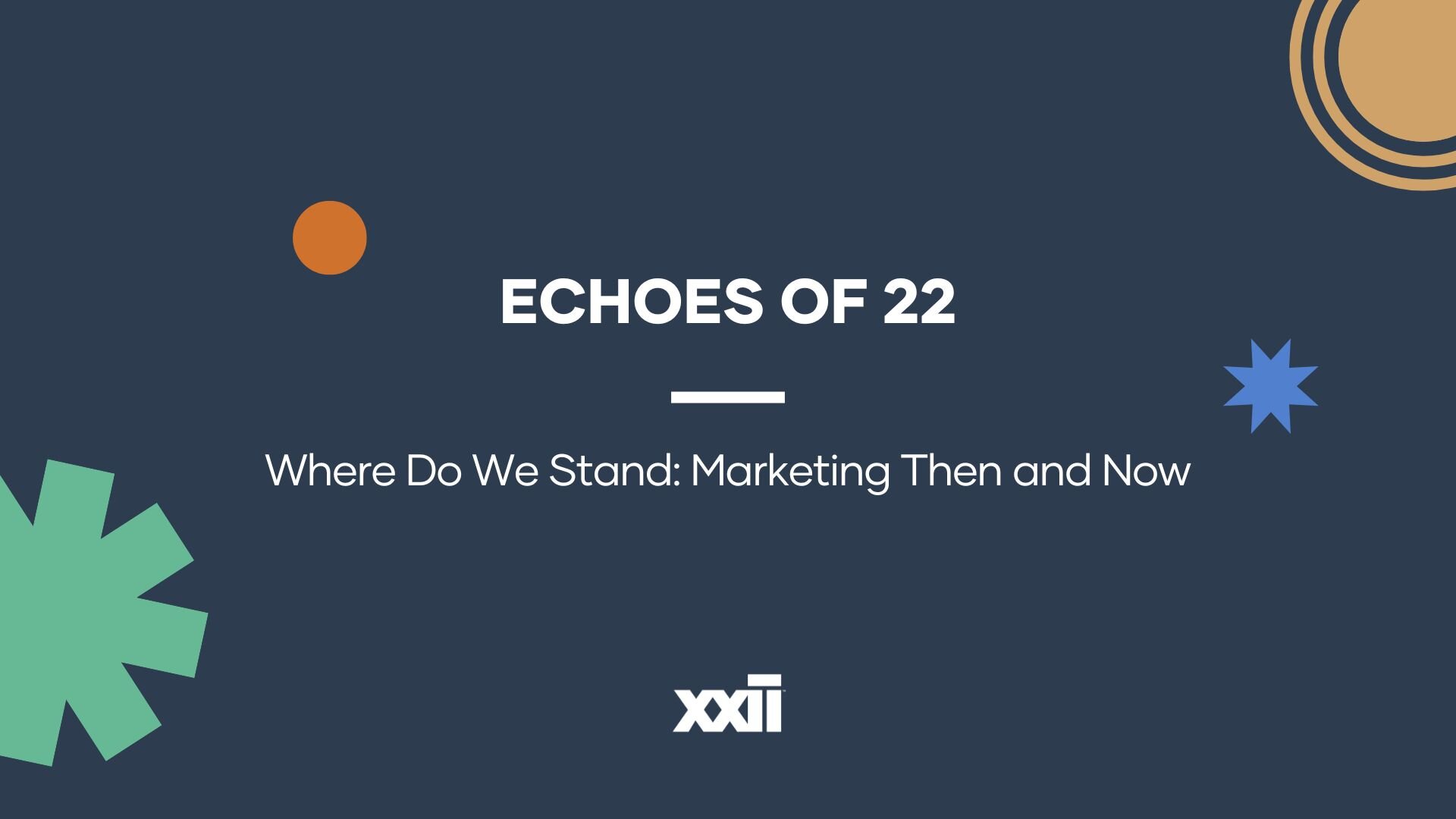Is Your Marketing Campaign an Invitation or an Interruption?
What You Should Know About Inbound Marketing versus Interruption Marketing
One of the greatest enjoyments we have at XXIIBrands is helping our clients get found, communicate, and grow their customer relationships. All three can be challenging. However, attracting customers tends to have more challenges than the others. So many businesses believe that if they could only attract more opportunities, they could also win and grow customer relationships when this is just not the case.
Are you in an industry where you provide great value to your customers and as a natural consequence, you gain more new customers through inbound marketing, or what is commonly called “word of mouth” marketing? Do you face a constant battle when trying to enter new markets, only to have to prove your value against competitors who have spent much more money on their advertising, yet do not provide comparable service or quality? If this is you, you should know that you are not alone.
Many businesses overlook the importance of inbound marketing, building “word of mouth” through social communities known as social media marketing, traditional next door neighbors, or otherwise. Social180 believes that in order to be effective with inbound marketing, you should know and understand the difference between inbound marketing and interruption marketing. We help businesses utilize, and we promote the use of, inbound marketing.
In our constant pursuit to read about and find new opportunities to help clients effectively utilize social media marketing – specifically inbound marketing – we recently read an article and watched a slideshare on Inbound Marketing for Startups by Rand Fishkin, CEO of SEOMOZ which does a good job of framing up a good thought process in this area. Basically, inbound marketing is natural, organic word of mouth marketing, whereas other aggressive tactical advertising methods are what Rand calls “interruption marketing” – meaning they interrupt the natural flow of progress.
As an analogy, imagine you are visiting with your next door neighbor in your front lawn when a young man in suit comes up and interrupts the conversation only to try to get you to sign up for a magazine subscription. This is not a fun experience, right? In contrast, imagine you are in conversation with your neighbor about last night’s crazy weather damaging your roof and how you need to figure out if it needs to be completely replaced, and she says, “Have you ever visited (their favorite contractor’s website)? I found it when dealing with our roof, and they did an awesome job. They were very professional and were in and out in 3 days.” Which of these scenarios do you prefer?
The word of mouth referral from your neighbor is more likely to feel like an invitation to investigate, and creates what we call inbound marketing. By contrast, the young man interrupting your conversation is exactly that – interruption marketing. This social influence can be similar online, i.e. if you participate in a social media community and you see that someone has ‘liked’ a contractor’s social post and also made a positive comment about a personal experience, you might be more inclined to do business with that company than buying from someone who walks up to your front door out of the blue to interrupt your normal flow of life.
As an example of interruption marketing online, have you ever tried searching a topic online only to find a website that creates 20 new pop-up windows (about completely unrelated products) blocking the one paragraph of barely useful information? That’s often the same site that won’t let you close the window without clicking a phrase like, “No, I don’t want to buy the most amazing product ever“.
As we continue to share more thoughts around inbound marketing and how it can help businesses grow, consider some of the basics for businesses to improve in this area:
- Create a consistent presence online and share experiences so people can see the quality of your work
- Ask your clients to connect with you online and leave a review about their experiences for others to see
- Create content that helps educate your audience and build your value with them (add value before you ask for the sale)
- Be committed to learning how you can consistently create added value with your customers and other local businesses in social spaces such as – Google+, Facebook, Twitter, LinkedIn, etc. – versus just expecting them to come to you.
Come back to our Blog for future posts about Branding, Culture, and Marketing. Also, be sure to visit Rand’s Inbound Marketing for Startups to see his valuable slideshare about growing with inbound marketing.




